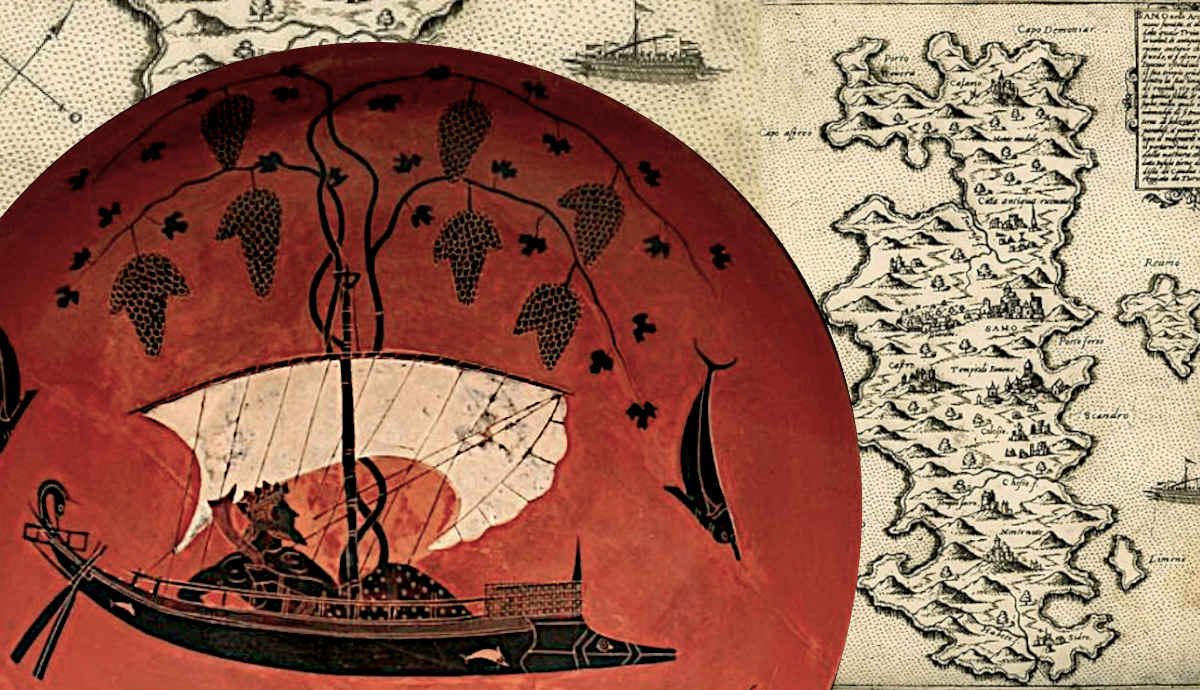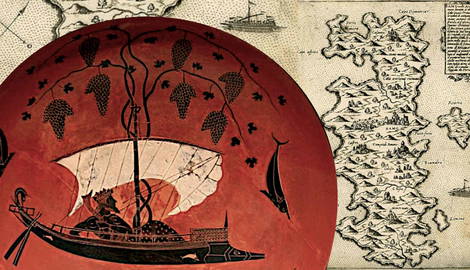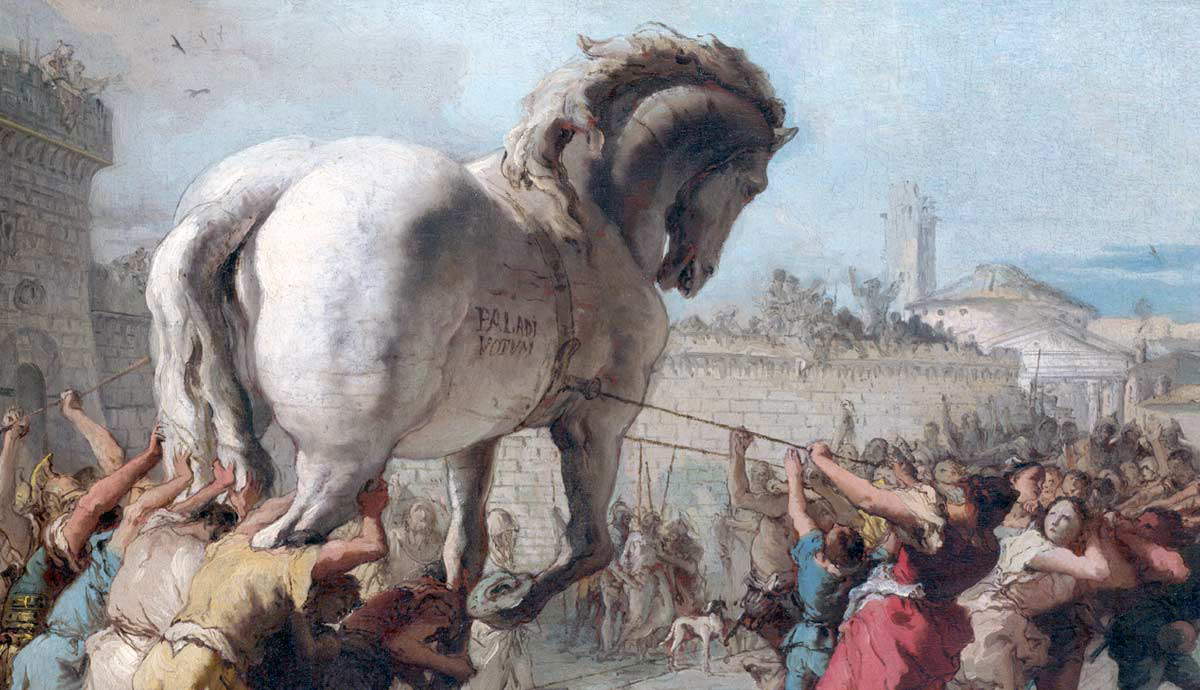
The Romans became the single most powerful nation to ever exist on the Italic peninsula. However, before the Romans rose to power, another nation dominated the region: the Etruscans. They lived just north of the Romans and were closely associated with them. The Etruscan civilization proper emerged around 700 BCE. From that time until the fifth century BCE, the Romans lived in the shadow of these northern neighbors.
But the dominance of the Etruscans was not confined to just the Italic peninsula itself. It also extended to the seas all around that region, although there was a lot of competition in the Mediterranean in that era. The Phoenicians from the Levant were active traders as far as Spain, their relatives in Carthage were also involved in trade, and the Greeks had colonies all over the Mediterranean. Yet, Diodorus Siculus refers to a time in which the Etruscans were “the master of the sea”. When was this period, and what did it look like?
The Rise of the Etruscan Thalassocracy

When the Etruscan civilization proper emerged in c. 700 BCE, it was not immediately a mighty nation, although it very quickly became one. But even after becoming powerful within the Italic peninsula, it took some time for them to form a thalassocracy (dominance over the seas). It was not until c. 600 BCE that the Etruscans could really be described as the “masters of the sea”. Therefore, Diodorus’ use of this term is almost certainly a reference to their position in the sixth century.
One of the things which enabled the Etruscans to gain a powerful dominance of their seas was their plentiful access to timber. This resource is vital for making ships. We know that the Etruscans greatly valued their ships because models of them have been found in Etruscan tombs, and they are also commonly depicted in Etruscan art.
The Extent of the Etruscan Dominance of the Sea

It is true that the Greeks later recognized that the Etruscans were the “masters of the sea” at one point. However, it would be wrong to say that the Etruscans ever dominated the entire Mediterranean. Their dominance was strongest in the Tyrrhenian Sea, which is the region of the Mediterranean between Italy and the islands of Corsica, Sardinia, and Sicily. This is only logical, because it was the area immediately off the coast of their homeland, Etruria. The Etruscans were also said to have established colonies on those three islands.
It is because of the strong Etruscan dominance of that region that it became known as the “Tyrrhenian Sea”. ‘Tyrrhenian’ is the Greek word for “Etruscan”. However, Etruscan trade did go beyond that region. It is known that the Etruscans also traveled as far as southern Gaul, where they established a colony at the mouth of the Rhone River. According to Stephan of Byzantium, some Etruscans also settled in Spain. It is clear that the Etruscans spread themselves far and wide, and there must have been trade between these disparate locations.

The Etruscans were not just active in the Western Mediterranean. They were also active in the other direction, although not as many surviving sources describe these activities. Archaeological research is very valuable in this regard. Etruscan pottery and other items of value have been found all over the Greek world, including along the Anatolian coast, such as at Samos. It is unclear how much of this is from Greek traders transporting these items from Etruria, and how much is from Etruscan traders traveling to those parts.
However, scholars tend to support the latter scenario. There is archaeological evidence of an Etruscan dedication at a sanctuary on the island of Aegina, in the Saronic Gulf just off the coast of Greece. This demonstrates the physical presence of Etruscans in this region. For these and other reasons, it is thought that the Etruscans themselves did trade within the Eastern Mediterranean.
Etruscan Piracy

The Etruscan dominance of the seas was obviously not pleasing to the other nations engaged in trade in those same areas. There are repeated references in ancient Greek literature to the Etruscans as pirates. In fact, they were so closely linked to piracy that the Greeks almost came to view them as synonymous with it. However, modern scholars tend to view these claims as negative propaganda. It is felt that the Greeks dismissed many seafarers as “pirates” when they were actively trading in areas where the Greeks wished that they themselves could trade.
Archaeology supports the conclusion that regular Etruscan traders often had violent skirmishes with other vessels. Ancient vases depict the Etruscan merchants with a crew of troops to protect their cargo. This indicates that the “pirates” referred to by the Greeks were just ordinary Etruscan traders. Evidently, trading was a dangerous business back then, and perhaps the Etruscans were more prepared to defend themselves than most.

There is some limited evidence of active Etruscan aggression against the Greeks. Herodotus records an event that must have occurred not too long before his own time. He refers to the Pelasgians from the island of Lemnos, but the term “Pelasgians” was also used as a synonym for “Etruscan”. A comparison of other ancient references to the people of Lemnos, along with archaeological evidence, also shows that these “Pelasgians” really were Etruscans. He explains that they had been driven out of their country by the Greeks. From their new home on Lemnos, they took fifty ships and attacked the Greek region of Attica during a festival. They seized many Athenian women and sailed away with them.
Later records recount this same event but explicitly call these Pelasgians “Tyrrhenians” — that is, Etruscans. Therefore, it is very likely that this event refers to an Etruscan raid on Greece. Although most Etruscan “piracy” was probably just normal trading activity, it does seem that there was some Etruscan aggression.
The Myth of Dionysus

Etruscan aggression is also indicated in a mythical poem that was composed in the sixth century BCE. It is one of the Homeric Hymns (not written by Homer himself, despite the name). In this story, a group of Etruscan sailors sees a young man on a Greek shore (possibly mainland Greece itself, or a Greek island). The sailors rush ashore, capture the young man, and bring him back to their boat. Unbeknown to these Etruscan pirates, the young man is actually the god Dionysus. As punishment for their actions, Dionysus transforms all but one of them into dolphins.
It is widely agreed that this myth is essentially a parody of the kind of Etruscan activities that were common in that era. It is evident that it reflects negative Greek views of the Etruscans. It is notable that the Etruscan sailors in the myth are described as actually going ashore to enact their piracy. This may lend support to the idea that Etruscan pirates did, on occasion, raid some Greek shores.
The Battle of Cumae

The Etruscan dominance of the seas started to decline by the end of the sixth century BCE. Although they had defeated the Greeks near Corsica at the important battle of Alalia in 535 BCE, the following decade saw the start of the end. Cumae, a Greek colony in the south of Italy, was rising to prominence. In 524 BCE and 508 BCE, it defeated the Etruscans on land in Italy. Then, in 474 BCE, Cumae joined forces with the more powerful Sicilian city of Syracuse to defeat the Etruscans in a naval battle. This occurred in the Bay of Naples, and it is usually known as the Battle of Cumae. This is the key event that really marks the downfall of the Etruscans as the dominant naval force in the region.
This loss also caused the Etruscans to lose their significant influence over the cities of Campania, the large region south of Rome. With this naval defeat and the loss of control over some of their territory, the Etruscans began to be eclipsed by other nations.
The Etruscan Dominance of the Seas

The Etruscans were, as Diodorus Siculus said, the “masters of the sea” during the height of their power. For about the entire sixth century BCE, they dominated the seas on either side of Italy. More than that, they extended their influence from one end of the Mediterranean to the other. They likely engaged in violent attacks against the Greeks during this period of dominance. However, as we have seen, it may have been simply Etruscan dominance itself that led the Greeks to call them pirates.
This dominance came to an end with the rise of other cities. Cumae and Syracuse, in particular, were responsible for the downfall of Etruscan naval superiority, with a significant defeat at the Battle of Cumae in 474 BCE.










